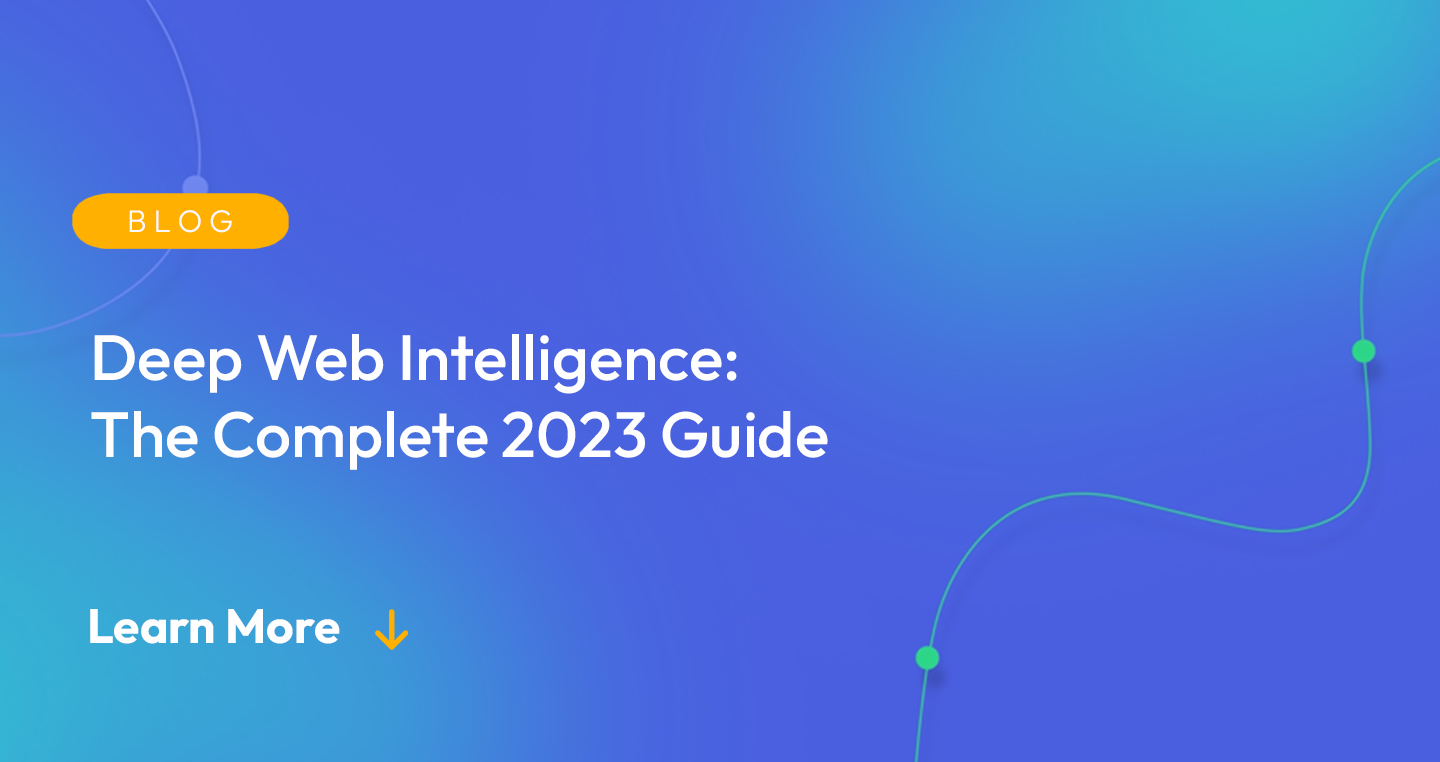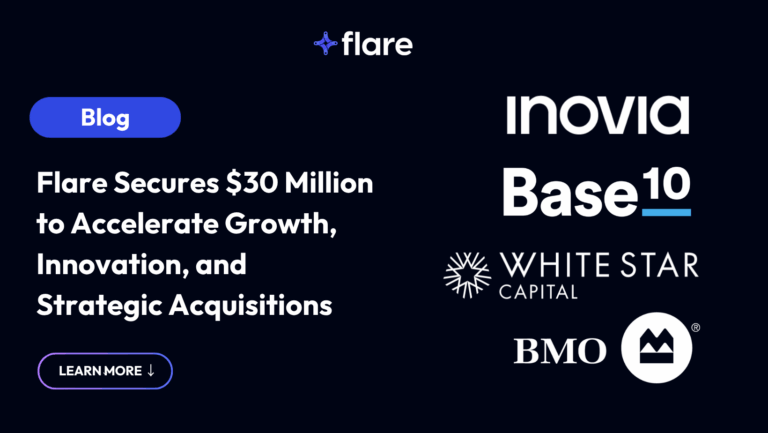
The internet is a vast digital landscape that can extend beyond the public facing part many see each day. Typically, the public facing portion of the internet that is seen today is called the clear or surface web. Aside from the clear web, there are facets of the internet that are visible but not indexed by search engines such as the deep web.
The deep web is often home to a variety of content that is shared among users which can include anonymous forums, marketplaces for illicit products, and unclassified government databases. According to some internet experts, it is estimated that the deep web supersedes publicly indexed websites by more than 400 to 500 times the size of the clear web.
In this guide, we’ll cover more on what the deep web is, how it differs from the clear web and the dark web, the importance of deep web intelligence, and methods to conduct deep web intelligence gathering.
The Deep Web vs. the Clear Web, Dark Web
For countless internet users, many of them believe that the public facing portion of the internet (also known as the clear web and the surface web) is the vast majority of the internet. The reality is that the internet is a vast, complex, and ever-evolving space that can be difficult to comprehend how far it can span. Most of the internet spans beyond social media websites, search engines, and online shopping sites. Here is a greater breakdown of these three distinctly different parts of the internet along with the characteristics and purposes of each:
1. The Clear Web
The clear web is the portion of the internet that most individuals know and use the most. It is composed of publicly accessible sites and web pages that are often indexed by search engines such as Google, Bing, or Yahoo. The clear web also is home to new media web publications, social media platforms, and e-commerce websites for consumers to shop from like Amazon. Most of the websites on the surface web are easily discoverable, transparent, and highly regulated sections of the internet.
2. The Deep Web
The deep web pertains to the area of the internet not indexed by mainstream search engines. This means that deep web content is not readily accessible through conventional search methods. It is also not easily accessible through commonly used web browsers. Although it is not visible to most users, it does not fully imply that the deep web has a criminal nature or is illicit. The deep web consists of a wide range of subject matters, which can include private databases, password-protected websites, and subscription-based services. Some examples of it include online banking platforms, academic databases, and email services like Gmail that require permissions or credentials in order to access these areas of the internet.
3. The Dark Web
The dark web is a small portion of the deep web that is intentionally hidden and requires specific programs in order to access it. The most well-known tool for accessing the dark web is the Tor network. This allows users to browse the internet anonymously by routing their traffic through volunteer-operated servers.
When using the dark web, users have a high level of privacy and security due to the accessibility process, also known as onion routing. The dark web is generally correlated with illegal activities, such as illicit marketplaces, drug trafficking, and online criminal activity. Despite this, not all dark web activity is illegal. It can be used for legitimate purposes, such as anonymous communication and protecting sensitive information.
Common Misconceptions about the Deep Web
Many internet users can confuse the deep web as being synonymous with the dark web. It is often associated with illegal activities and is intentionally hidden from most users. This can create a sense of uncertainty about what is or even cause concern regarding this subset of the internet. There are several common misconceptions about the deep web that can lead to people misinterpreting its accessibility and purpose. Here are a few additional common misconceptions about the deep web:
- That it is entirely anonymous. While there are some sectors of the deep web that require anonymity, that can only account for a small portion of the internet. Ultimately, the deep web can still be accessible by law enforcement, security experts, and intelligence professionals.
- Search engines can access all of the internet. This misconception is inaccurate given that most search engines, such as Google, only index a small section of the overall internet. It accounts for a significant portion of the internet that is not indexed by search engines.
- It is only used for illicit purposes. Although the deep web hosts illicit content, it also contains legitimate information and services that are not indexed by search engines. For instance, academic databases, government records, and private forums can also be part of the deep web.
- Specific skills or software are required in order to access it. While accessing the dark web requires specialized techniques and tools to reach it, many parts of the deep web can still be accessible with traditional web browsers if users have the specific URL or login credentials.
The Importance of Deep Web Intelligence
Today’s digitally driven world requires organizations and their teams to stay aware of potential threats and vulnerabilities to systems than ever before. A common area of cybersecurity that can often be underrepresented is deep web intelligence. This has given rise to several risks and challenges that require fresh approaches to security and intelligence gathering. Over the past few years, the deep web has emerged as a notably significant area of focus for countless security experts and intelligence analysts. Below are two ways deep web intelligence has become increasingly important is by using it as a method to identify emerging threats and vulnerabilities.
Identifying emerging threats and vulnerabilities
One of the primary reasons deep web intelligence has become so critical is its ability to identify emerging threats and vulnerabilities before malicious actors can exploit them. Although it is not indexed by traditional search engines, much of it is hidden from direct public access. Ultimately, this can make it a breeding ground for both malicious and non-threatening activities. Therefore, monitoring the deep web for potential risks and vulnerabilities is a crucial component of any robust cybersecurity strategy.
By monitoring the deep web, security experts and intelligence analysts can gain valuable insights into the activities of threat actor groups. This can include research into their plans, tactics, and potential targets for their attacks. This information can identify emerging threats and vulnerabilities, allowing organizations to take proactive steps to mitigate these risks before they can be exploited. It allows organizations, law enforcement, and security practitioners to allow for early detection, proactive defense measures to safeguard systems from exploits.
Importance of Telegram monitoring
One messaging platform that has become popular among malicious actors in recent years is Telegram. Telegram is a messaging application that offers end-to-end encryption for secure communication capabilities. The use of Telegram by people has also become a cause for concern in relation to deep web intelligence gathering.
Although Telegram can be widely used for legitimate communication between parties, it can also be used for illicit activities. Thus making it an attractive option for criminals who want to communicate securely without detection by law enforcement. Consequently, it has become a major platform for cybercrime, scams, terrorism, political activism, organized crime, and other malicious activities.
For organizations that rely on secure communications, it is crucial to monitor Telegram for possible threats and vulnerabilities. This requires specialized tools and expertise, as well as a deep understanding of the platform itself. By monitoring Telegram regularly, organizations can gain valuable insights into threat actor activities and take proactive steps to protect their networks and data from attacks successfully.
Tools and Techniques for Deep Web Intelligence Gathering
Deep web intelligence gathering has become a crucial aspect of online investigations, cybersecurity, and research for countless organizations and law enforcement agencies. When it comes to conducting deep web intelligence gathering, there are several tools and techniques organizations can take effectively. Here are three ways that teams can successfully execute deep web intelligence gathering in order to minimize threats and vulnerabilities from adversaries:
1. Specialized search engines and crawlers
One of the most effective ways to access the deep web is by using specialized search engines and website crawlers. These tools search for data that is not indexed by conventional search engines. These programs operate by using a variety of methods, such as querying databases, crawling web pages, and searching for unlinked pages. They can help organizations identify, address, and safeguard against deep web threats discovered by employing these methods.
2. Dark web monitoring services
Another reliable way to conduct deep web intelligence gathering is by employing dark web monitoring services. Dark web monitoring services are tools designed to monitor the dark web and identify potential risks. These services are designed to monitor the dark web for leaked credentials, protect against targeted attacks, and prevent unauthorized account access from cybercriminals. Monitoring the dark web can help organizations identify potential threats and take proactive measures to protect their assets.
3. Open-source intelligence (OSINT) tools
Open-source intelligence (OSINT) pertains to the gathering and analysis of data from publicly available sources. OSINT tools are designed to collect, analyze, and disseminate information from various resources, which can include social media, news outlets, and public records queries. These tools can gather information on individuals, organizations, or events in relation to illicit activities or threats. While some OSINT programs may focus on clear web content, many can also conduct deep web intelligence gathering.
The deep web is a vast and complex network of resources and websites that live beyond the grasp of conventional search engines. Although there is only a certain level of illicit activity on the deep web, it is also a valuable resource to organizations and law enforcement. The deep web can be a hub of information not readily available through traditional channels. Deep web intelligence gathering can be a powerful resource and tool for discovering information and gaining valuable insights otherwise not obtainable through the everyday internet regularly used today.
How Flare Can Help with Deep Web Monitoring
Embracing the possibilities of conducting deep web intelligence gathering enables organizations to better monitor and safeguard their threat landscape. Flare provides organizations with the ability to monitor the deep web and alert you to new developments as they happen.
These insights and monitoring can give you a valuable edge in staying ahead of the curve in today’s ever-evolving threat landscape. Whether you are looking to stay on top of emerging threats or uncover new opportunities for growth and expansion, Flare can help to keep your team and organization stay informed and up-to-date.





